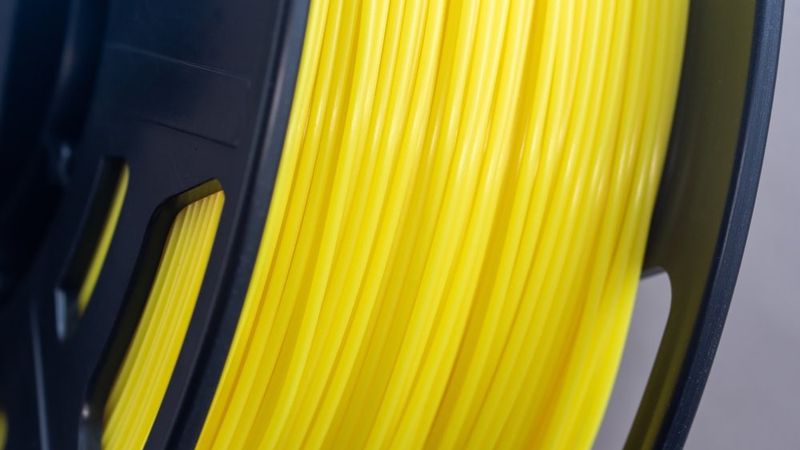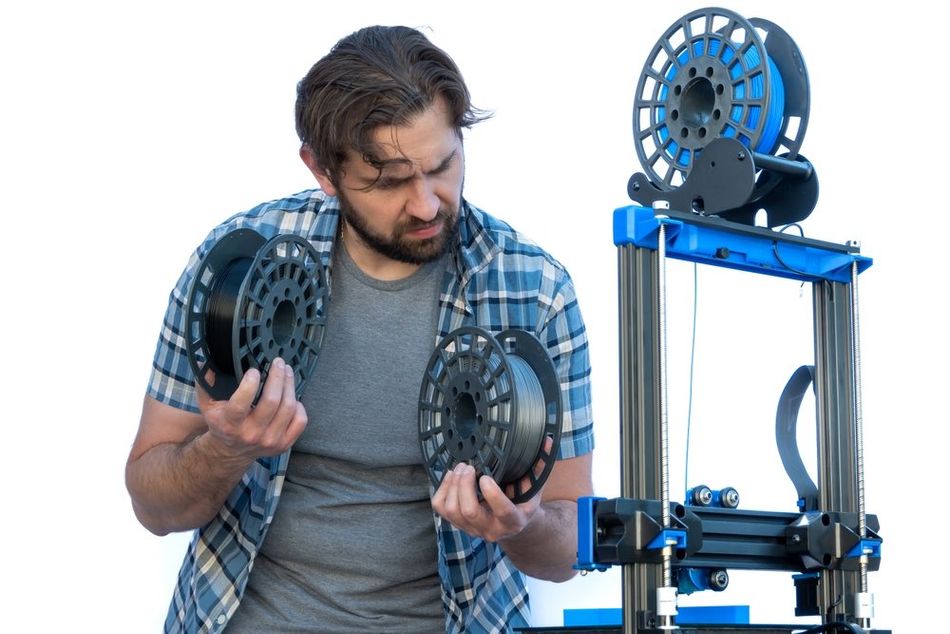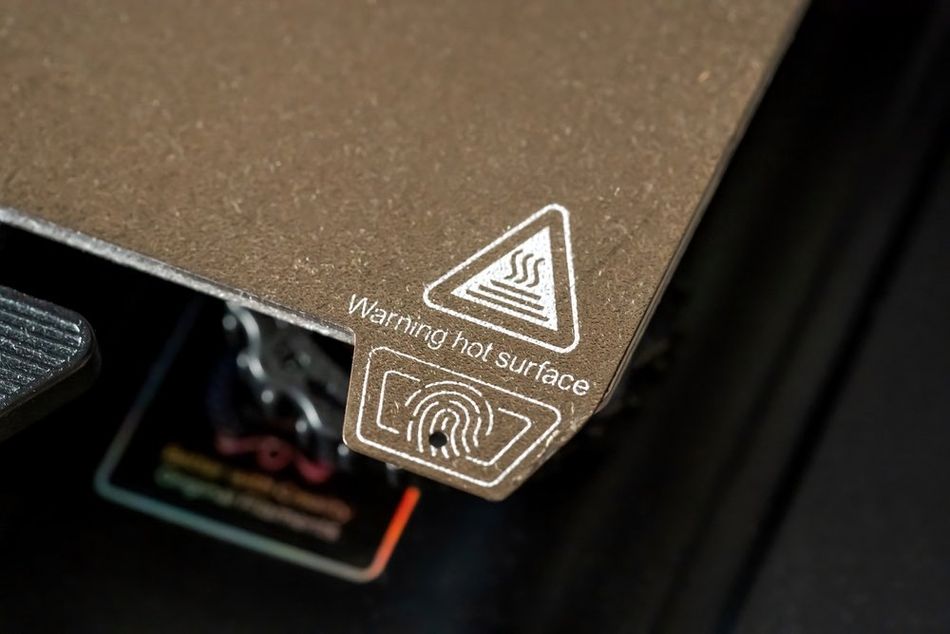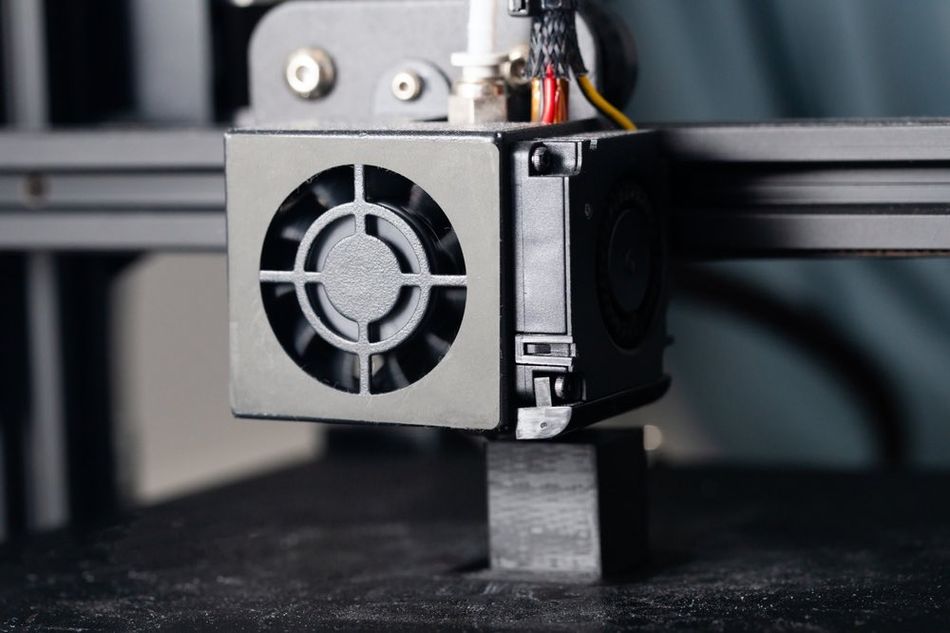ASA vs PLA: A Comprehensive Comparison and Guide
An in-depth look at how popular filaments PLA and ASA compare to each other in terms of printability, applications, and more.

PLA is the most widely used filament in 3D printing; ASA is a a hardier version of ABS.
ASA (Acrylonitrile Styrene Acrylate) and PLA (Polylactic Acid) are two materials commonly used in fused deposition modeling (FDM) 3D printing. Each material has unique properties and uses, which makes it suitable for different types of projects. This article will delve deeper into the properties and uses of these two materials, as well as their advantages and disadvantages in 3D printing.
All About ASA
ASA, short for Acrylonitrile Styrene Acrylate, is a type of thermoplastic that is widely used in the manufacturing industry. It is a copolymer of SAN (Styrene Acrylonitrile) and acrylic rubber. The combination of these materials gives ASA its unique properties, making it a versatile material for various applications.[1]
ASA is known for its high impact resistance and toughness. The polymer can withstand physical stress and is less likely to crack or break compared to other plastics. This makes ASA an excellent choice for parts that need to withstand high stress or impact, such as automotive components and protective casings.
Another notable property of ASA is its excellent weather resistance. It can withstand exposure to UV light, rain, and other weather conditions without significant degradation. This is due to the acrylic rubber in ASA, which provides UV resistance and prevents the material from becoming brittle over time. This makes ASA a popular choice for outdoor applications, such as exterior automotive parts and outdoor furniture.
ASA requires a higher hotend temperature than some other materials, typically around 230-250°C. This can make it more challenging to print with, especially for those new to 3D printing. Similar to ABS, ASA can have a tendency to shrink and warp on the build plate, but a heated bed and controlled cooling can help mitigate these issues.
ASA in 3D Printing
ASA filament has become a popular choice for 3D printing applications that require high durability, impact resistance, and weather resistance. In this section, we will explore the benefits and drawbacks of using ASA in 3D printing, as well as some tips for achieving the best results.
One of the main advantages of ASA in 3D printing is its excellent durability and stability. Its high impact resistance and toughness make it suitable for parts that need to withstand high stress or impact, such as mechanical components or protective casings. Additionally, ASA's weather resistance, including resistance to UV light and water, makes it an ideal choice for outdoor applications where exposure to the elements is a concern.
However, ASA's superior properties come with a trade-off in terms of printability. ASA requires a higher printing temperature, typically around 230-250°C, and a heated bed to ensure proper adhesion and prevent warping. This can make it more challenging to print with, especially for those new to 3D printing or those using 3D printers that do not support these requirements.
ASA can also be more prone to issues like stringing or oozing during the printing process. This may require fine-tuning of printer settings, such as retraction and cooling, to achieve optimal print quality. Using a cooling fan and adjusting the print speed can help minimize these issues and improve the overall print quality.
To achieve the best results when printing with ASA, it's essential to optimize your printer settings, such as temperature, speed, and cooling. Experimenting with different settings and using a high-quality ASA filament can help improve print quality and reduce issues like warping, stringing, or oozing. Additionally, proper storage of ASA filament, including keeping it in a dry environment, can help maintain its quality and ensure consistent printing results.
Recommended reading: ASA vs ABS: Finding the right 3D printing filament

All About PLA
Polylactic acid (PLA) is a biodegradable thermoplastic derived from renewable resources, primarily fermented plant sugars like corn starch or sugarcane. As a popular alternative to traditional petroleum-based plastics, PLA offers environmental advantages due to its ability to break down into non-toxic components under certain conditions, reducing reliance on fossil fuels and minimizing ecological impact.
PLA possesses versatile properties, including transparency, gloss, and a wide range of colors, making it suitable for various applications, from packaging materials to medical devices and 3D printing filaments. Its biocompatibility has led to its use in medical implants and drug delivery systems, where it can safely degrade within the human body.[2] While PLA has gained recognition for its sustainability, challenges remain, such as its sensitivity to high temperatures, limiting its applications in certain environments.
Despite these limitations, ongoing research focuses on enhancing PLA's thermal and mechanical properties, expanding its potential applications in diverse industries. As consumer and industrial interest in eco-friendly materials grows, PLA continues to play a crucial role in the development of sustainable alternatives within the field of materials science.
PLA in 3D Printing
PLA is among the most commonly used 3D printing filaments. Part of its popularity comes from the fact that it is a biodegradable material derived from renewable resources like corn starch or sugar cane, making it a more environmentally friendly choice than other petroleum-based thermoplastics.
PLA is also popular in 3D printing due to its ease of use. The filament prints at a lower temperature than many other materials, typically around 180-220°C, and doesn't require a heated bed. This makes PLA compatible with most 3D printers and accessible to beginners. Furthermore, PLA has a relatively low shrinkage rate, reducing the risk of warping or deformation during cooling.
In terms of physical properties, PLA is a strong material (with a tensile strength of 65 MPa), however it is highly brittle, which means it has low impact resistance compared to other materials like ABS and ASA. It also has a low glass transition temperature, around 60-65°C, which means it can start to soften or deform at relatively low temperatures. This makes PLA less suitable for applications that require high heat resistance or weather resistance.
PLA comes in a wide variety of colors, including translucent and glow-in-the-dark options. This, combined with its ease of use, makes PLA a popular choice for aesthetic prints or prototypes. However, it's important to note that PLA is not as durable or weather-resistant as some other materials, like ASA, and it can degrade over time, especially when exposed to the elements.
To achieve the best results when printing with PLA, it's essential to optimize your printer settings, such as temperature, speed, and cooling. Experimenting with different settings and using a cooling fan can help improve print quality and reduce issues like stringing or oozing. Additionally, using a high-quality PLA filament and properly storing it to prevent moisture absorption can also contribute to better print results.
Recommended reading: PLA Bed Temperature & Print Temperature Settings
Comparing ASA and PLA
When choosing a material for 3D printing, it's important to consider the properties of the material and how they align with the requirements of the project. ASA and PLA, while both popular choices for 3D printing, have different properties that make them suitable for different applications.
Let’s take a look at how the two 3D printing filaments compare in terms of material properties, printability, durability, post-processing, sustainability, and cost.
Material Properties
Strength
In terms of tensile strength, both ASA and PLA are relatively strong materials. ASA filament has a tensile strength around 33 MPa[3], while PLA has a higher tensile strength around 50 MPa.[4] Despite having a lower tensile strength, ASA can withstand higher levels of stress and impact than PLA due to its higher ductility. PLA, while strong, is more brittle and tends to crack under high stress or impact.
Flexibility
ASA is more flexible than PLA, which is known for its stiffness and brittleness. This makes ASA a better choice for parts that need to flex or bend without breaking, while PLA is better suited for rigid parts or structures.
Temperature resistance
ASA has a higher heat resistance than PLA. ASA can withstand temperatures up to 95-105°C without deforming, while PLA has a lower glass transition temperature, around 60-65°C, and can start to soften or deform at relatively low temperatures.
Printability
Ease of printing
PLA is known for its ease of use in 3D printing. It prints at a lower temperature than ASA, typically around 180-220°C, and doesn't require a heated bed. This makes PLA compatible with most 3D printers and accessible to beginners. PLA also has good layer adhesion and is less prone to warping or deformation during cooling, thanks to its relatively low shrinkage rate.
Due to its higher printing temperature, typically around 230-250°C, ASA can be more challenging to print than PLA, especially for those new to 3D printing. The higher temperature may require a heated print bed and a well-ventilated printing area to ensure proper bed adhesion and prevent warping. Additionally, ASA can be more prone to issues like stringing or oozing, which may require fine-tuning of printer settings, such as retraction and cooling, to achieve optimal print quality.

Compatibility
In terms of printer compatibility, PLA is more widely compatible with 3D printers due to its lower printing temperature and lack of requirement for a heated bed. This makes PLA a more accessible option for those with entry-level or budget 3D printers. ASA, with its higher printing temperature and need for a heated bed, may require more advanced or specialized 3D printers to achieve optimal results.
Print speed
When it comes to print speed, both ASA and PLA can be printed at similar speeds, typically ranging from 40-100 mm/s. However, the optimal print speed may vary depending on the specific printer, material, and part geometry. It's essential to experiment with different print speeds to find the best balance between print quality and printing time.
Durability and Stability
ASA, or Acrylonitrile Styrene Acrylate, is known for its high durability and stability. It has high impact resistance, meaning it can withstand physical stress and is less likely to crack or break compared to other plastics. This makes ASA an excellent choice for parts that need to withstand high stress or impact, such as mechanical parts or protective casings.
In addition to its high impact resistance, ASA also has excellent weather resistance. It can withstand exposure to UV light and water without significant degradation, making it a popular choice for outdoor applications. This weather resistance contributes to ASA's overall stability, as it can maintain its shape and functionality even when exposed to harsh environmental conditions.
PLA is not as durable or stable as ASA. PLA is more brittle and can crack under high stress or impact. It also has a lower glass transition temperature, around 65°C, which means it can start to soften or deform at relatively low temperatures. This makes PLA less suitable for applications that require high heat resistance or durability.
Furthermore, PLA can degrade over time, especially when exposed to the elements. This degradation can lead to a loss of structural integrity and functionality over time, limiting PLA's usefulness for long-term or outdoor applications.
Recommended reading: ASA vs PETG: A Comprehensive Comparison and Guide
Post-processing
Post-processing techniques for PLA and ASA filaments differ based on their distinct material properties. PLA responds well to sanding, painting, and adhesive bonding, making it versatile for various finishing touches. However, PLA does not benefit from acetone vapor smoothing, a technique more suited to ABS. Acetone will make PLA sticky and rubbery, which is not the desired effect.
ASA can be sanded (wet or dry), glued, and painted for functional and aesthetic enhancements. Acetone can also be used to smooth ASA prints. Vapor smoothing is the best technique for achieving a smooth and glossy surface finish for ASA prints.
Sustainability
Generally speaking, if environmental impact is a key priority, PLA is the greener option, since it derived from renewable, plant-based resources, while ASA is petroleum based. That said, while PLA is biodegradable, its full environmental benefit requires specialized composting conditions that may not be present in conventional home compost setups. PLA typically requires an industrial composting facility with controlled temperatures and microbial conditions to break down efficiently.
On the other hand, ASA, being a more traditional plastic, lacks the biodegradability of PLA. It is, however, durable and weather-resistant, which may extend its usable lifespan in certain applications, mitigating the need for frequent replacements and reducing overall waste generation. Balancing considerations of biodegradability, composting infrastructure, and product longevity is crucial when evaluating the environmental impact of these 3D printer filaments.
Cost and availability
Other key considerations when choosing a filament are cost and availability. PLA filament spools are more cost-effective and widely available compared to ASA. PLA's popularity in the 3D printing community contributes to its lower price point, as it is mass-produced and offered by numerous suppliers. Its affordability makes PLA an attractive option for hobbyists and beginners.
ASA, while accessible, tends to be pricier due to its specialized properties, such as enhanced weather resistance. Additionally, ASA is not as commonly stocked by all filament suppliers, making it less ubiquitous in comparison to the readily available PLA. For those prioritizing cost and easy acquisition, PLA remains the more economical and prevalent choice in the market.

Choosing Between ASA and PLA
The choice between ASA and PLA for 3D printing depends on several factors, including the specific requirements of the project, the capabilities of the 3D printer, and the user's experience and comfort level with 3D printing.
ASA, with its high durability, impact resistance, and weather resistance, is an excellent choice for parts that need to withstand high stress, impact, or exposure to the elements. It is particularly suitable for outdoor applications or parts that need to maintain their functionality and integrity over time. However, ASA's higher printing temperature and need for a heated bed can make it more challenging to print with, especially for those new to 3D printing.
PLA, on the other hand, is a popular choice for its ease of use, lower printing temperature, and wide compatibility with 3D printers. It's an excellent choice for aesthetic prints, prototypes, or projects that don't require high durability or heat resistance. However, PLA's lower durability and stability, especially when exposed to high temperatures or the elements, can limit its usefulness for certain applications.
When to Choose ASA
Choosing ASA as a 3D printing material is particularly advantageous when the project requirements demand high durability, impact resistance, and weather resistance. For instance, if the project involves creating parts for outdoor applications, ASA's excellent weather resistance, including resistance to UV light and water, makes it a superior choice. This resistance ensures that the printed parts can maintain their shape and functionality even when exposed to harsh environmental conditions, providing longevity and reliability.
Similarly, if the project involves creating mechanical parts or protective casings that need to withstand high stress or impact, ASA's high impact resistance and toughness make it a suitable choice. These properties ensure that the printed parts can endure physical stress and are less likely to crack or break compared to parts printed with other materials.
When to Choose PLA
Choosing PLA as a 3D printing material is advantageous when the project requirements prioritize ease of use, compatibility with a wide range of printers, and environmentally friendly properties. These factors make PLA an excellent choice for beginners, aesthetic prints, prototypes, and projects that do not require high durability or heat resistance.
For instance, if the project involves creating aesthetic prints or prototypes where appearance is a priority, PLA's wide variety of colors, including translucent and glow-in-the-dark options, make it an attractive choice. Its ease of use and compatibility with most 3D printers also make it a popular choice for those new to 3D printing or those with entry-level or budget printers.
If the project does not require high durability or heat resistance, PLA can be a suitable choice. While PLA is not as durable or heat-resistant as ASA, it is still relatively strong and rigid, making it suitable for parts that do not need to withstand high stress, impact, or high temperatures, such as aesthetic models.
Additionally, PLA's biodegradable nature and derivation from renewable resources like corn starch or sugar cane make it an environmentally friendly choice for extrusion 3D printing. This can be an important consideration for users who prioritize sustainability and reducing their environmental impact.
However, it's important to note that PLA's lower durability and stability, especially when exposed to high temperatures or the elements, can limit its usefulness for certain applications. For projects that require high durability, impact resistance, or weather resistance, a material like ASA may be a better choice.
Recommended reading: TPU vs PLA: Choosing Between Flexible and Rigid Filament for 3D Printing
Conclusion
The choice between ASA and PLA for 3D printing is multifaceted, hinging on several factors such as the specific requirements of the project, the capabilities of the 3D printer, and the user's experience and comfort level with 3D printing. ASA, with its high durability, impact resistance, and weather resistance, is an excellent choice for functional prototypes or end-use parts that need to withstand high stress, impact, or exposure to the elements. However, its higher printing temperature and need for a heated bed can make it more challenging to print with, especially for those new to 3D printing.
On the other hand, PLA is a popular choice for its ease of use, lower printing temperature, and wide compatibility with 3D printers. It's an excellent choice for aesthetic prints, prototypes, or projects that don't require high durability or heat resistance.
Frequently Asked Questions (FAQs)
Q: What are the main differences between ASA and PLA?
A: The main differences between ASA and PLA are found in their properties and use cases. ASA is known for its high durability, impact resistance, and weather resistance, making it suitable for parts that need to withstand high stress, impact, or exposure to the elements. On the other hand, PLA is known for its ease of use, lower printing temperature, and wide compatibility with 3D printers, making it suitable for aesthetic prints, prototypes, or projects that don't require high durability or heat resistance.
Q: Can all 3D printers print with both ASA and PLA?
A: Not all 3D printers can print with both ASA and PLA. ASA requires a higher printing temperature and a heated bed, which not all 3D printers can provide. On the other hand, PLA has a lower printing temperature and is compatible with most desktop FFF 3D printers.
Q: Is ASA or PLA more environmentally friendly?
A: PLA is generally considered more environmentally friendly than ASA. PLA is derived from renewable resources like corn starch or sugar cane and is biodegradable. On the other hand, ASA is derived from petroleum and is not biodegradable.
Q: Which is easier to print with, ASA or PLA?
A: PLA is generally easier to print with than ASA. PLA has a lower printing temperature and is compatible with most 3D printers, making it a popular choice for those new to 3D printing. ASA, on the other hand, requires a higher printing temperature and a heated bed, which can make it more challenging to print with, especially for those new to 3D printing.
References
[1] Acrylonitrile Styrene Acrylate [Internet]. LG Chem. 2023. https://www.lgchem.com/product/PD00000014
[2] DeStefano V, Khan S, Tabada A. Applications of PLA in modern medicine. Engineered Regeneration. 2020 Jan 1;1:76-87. https://doi.org/10.1016/j.engreg.2020.08.002
[3] Acrylonitrile Styrene Acrylate (ASA) [Internet]. Stratasys, 2023. Available from: https://www.stratasys.com/en/materials/materials-catalog/fdm-materials/asa/
[4] Gao G, Xu F, Xu J, Liu Z. Study of Material Color Influences on Mechanical Characteristics of Fused Deposition Modeling Parts. Materials. 2022 Oct 10;15(19):7039. 10.3390/ma15197039
Table of Contents
All About ASAASA in 3D PrintingAll About PLAPLA in 3D PrintingComparing ASA and PLAMaterial PropertiesPrintabilityDurability and StabilityPost-processingSustainability Cost and availabilityChoosing Between ASA and PLAWhen to Choose ASAWhen to Choose PLAConclusionFrequently Asked Questions (FAQs)References